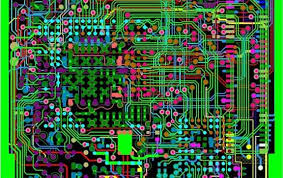Introduction
While PCB assembly is a critical process in electronics manufacturing, it also presents several challenges that PCB assemblers must address to ensure the production of high-quality electronic assemblies. This article examines some of the key challenges encountered in PCB assembly and strategies for overcoming them.
Component Availability
Lead Times
One of the primary challenges in PCB assembly is ensuring the timely availability of electronic components. Some components may have long lead times due to supply chain disruptions, component shortages, or fluctuations in demand. PCB assemblers must carefully manage component procurement to avoid production delays.
Obsolescence
Another challenge is dealing with component obsolescence. Electronic components may become obsolete or end-of-life, making them difficult or impossible to procure. PCB assemblers must proactively monitor component lifecycles and develop strategies for sourcing alternative components or redesigning PCBs when necessary.
Assembly Process Complexity
High-Density Designs
As electronic devices become increasingly compact and complex, PCB assembly processes must accommodate high-density designs with densely packed components and intricate routing requirements. PCB assemblers must employ advanced techniques and equipment to ensure precise component placement and soldering in tight spaces.
Miniaturization
Miniaturization presents another challenge in PCB assembly, as smaller components and finer pitch sizes require greater precision and accuracy during assembly. PCB assemblers must use specialized equipment and techniques to handle miniaturized components and ensure reliable soldering without compromising quality.
Quality Control
Solder Joint Integrity
Ensuring the integrity of solder joints is critical for the reliability of PCB assemblies. Challenges such as insufficient solder paste, solder bridging, and tombstoning can compromise solder joint quality and lead to electrical failures. PCB assemblers must implement robust quality control measures, including automated optical inspection (AOI) and X-ray inspection, to detect and rectify soldering defects.
Component Verification
Verifying the authenticity and quality of electronic components is another challenge in PCB assembly. Counterfeit components, substandard materials, and poor-quality components can adversely affect the performance and reliability of electronic assemblies. PCB assemblers must establish strict supplier qualification processes and conduct thorough component testing and inspection to mitigate the risk of using counterfeit or low-quality components.
Environmental Factors
Temperature and Humidity Control
Environmental factors such as temperature and humidity can impact the PCB assembly process and the quality of electronic assemblies. Variations in temperature and humidity levels can affect solder paste viscosity, component alignment, and soldering quality. PCB assemblers must maintain controlled environmental conditions in assembly facilities to ensure consistent and reliable production outcomes.
ESD Protection
Electrostatic discharge (ESD) poses a risk to sensitive electronic components during PCB assembly. ESD events can damage components and compromise the functionality and reliability of electronic assemblies. PCB assemblers must implement ESD protection measures, including proper grounding, antistatic workstations, and ESD-safe handling procedures, to prevent ESD-related failures.
Conclusion
PCB assembly presents numerous challenges that PCB assemblers must navigate to ensure the production of high-quality electronic assemblies. By addressing issues related to component availability, assembly process complexity, quality control, and environmental factors, PCB assemblers can overcome these challenges and deliver reliable and robust PCB assemblies. Partnering with a reputable PCB assembly provider like pcb assembly can provide expertise and support in overcoming these challenges and achieving successful outcomes in PCB assembly projects.

